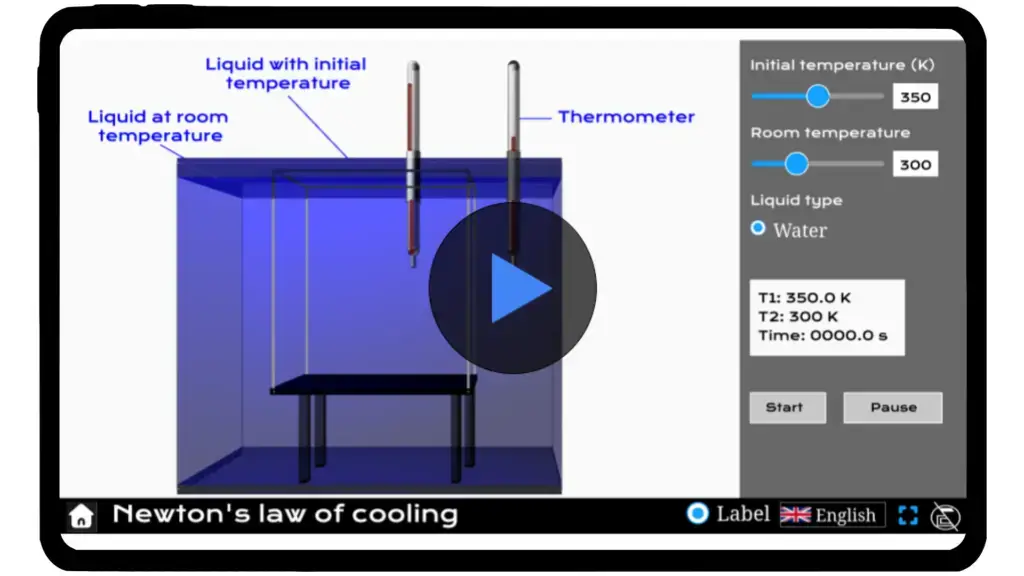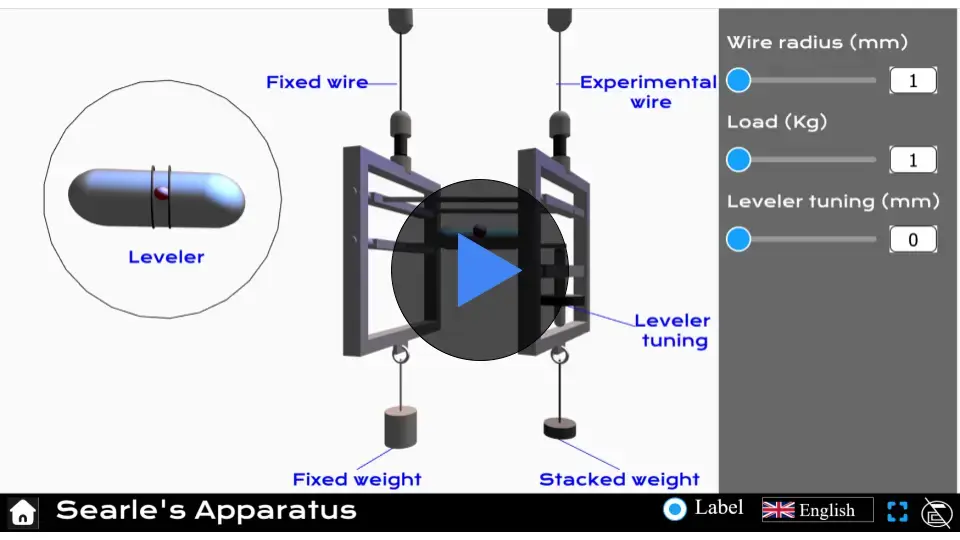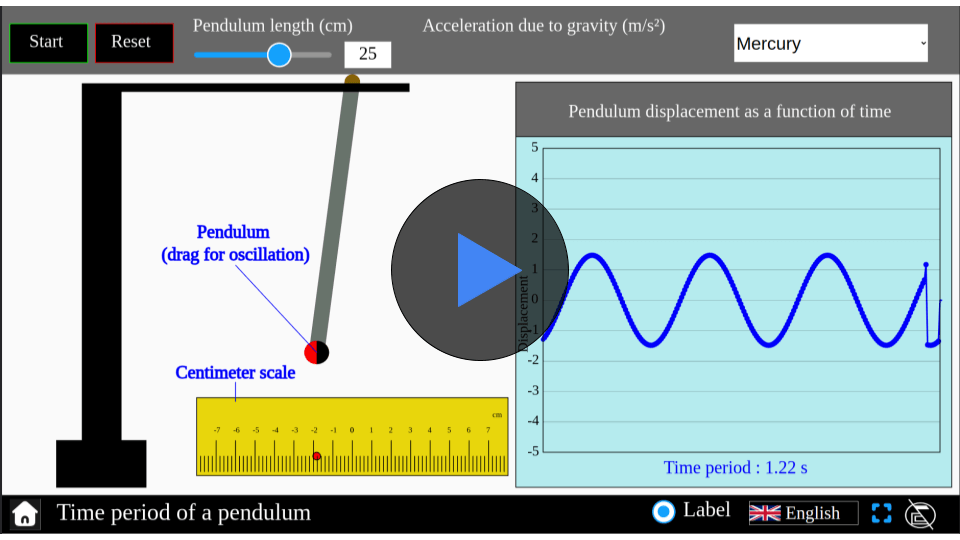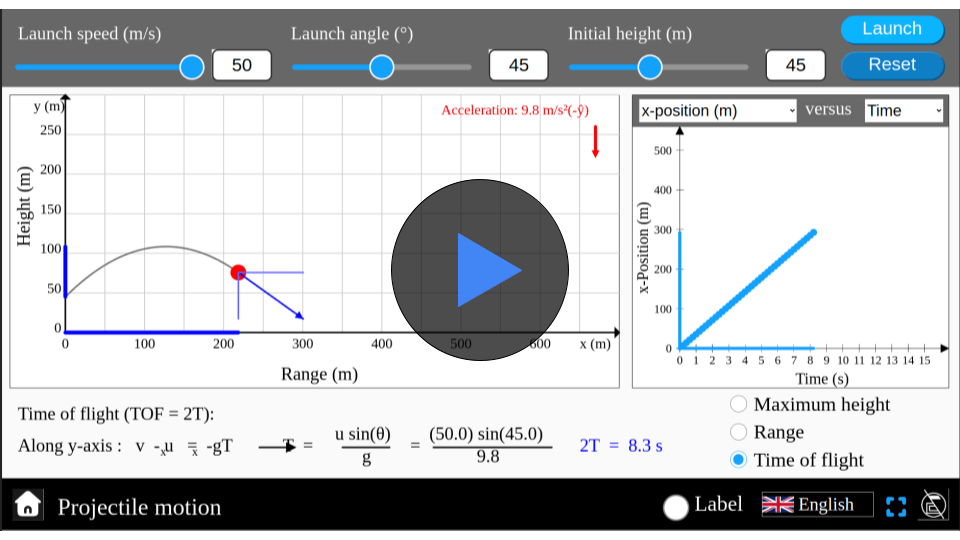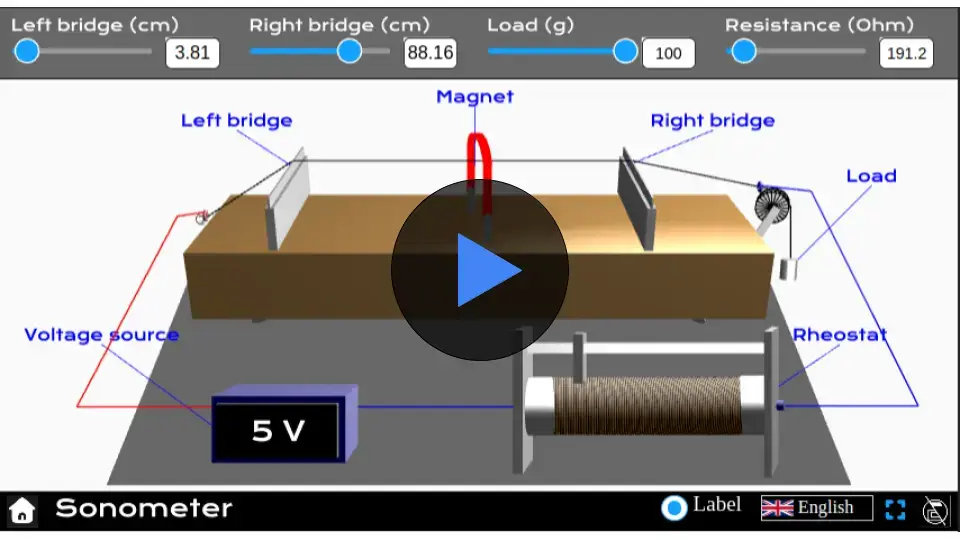Newton's law of cooling simulator
Explore Newton's Law of Cooling interactively: discover how temperature changes in relation to surrounding conditions with our engaging simulator!
Newton's law of cooling
Temperature influences everything around us, from climate systems to the function of everyday appliances. But how does temperature evolve over time in different environments? Explore the fascinating principles of heat transfer with our Newton’s Law of Cooling Simulator! Adjust variables, experiment with temperature differences, and observe real-time cooling dynamics. Dive into the science of thermal behavior and uncover the laws that govern it—start your exploration today!
\( \frac{dT}{dt} = -k (T – T_{\text{env}})
\)
Mathematical description
where:
- \( T \) is the temperature of the object at time \( t \)
- \( T_{\text{env}} \) is the ambient temperature of the surroundings
- \( k \) is the cooling constant
- \( \frac{dT}{dt} \) is the rate of change of the object’s temperature
Simulator
Explore the physics of heat transfer with our interactive Newton’s Law of Cooling Simulator!
Experiment with the liquid and room temperatures to observe how they influence the liquid’s cooling rate in real time.
Interactive Physics Simulator – Newton's Law of Cooling
🌟 You May Also Like
Suggested experiments and activities based on your progress...
FAQs on Newton's Law of Cooling
Qus 1. What is Newton's law of cooling?
Newton’s law of cooling states that the rate of heat loss of a body is directly proportional to the temperature difference between the body and its surroundings, provided the temperature difference is small and the surroundings are relatively stable.
Qus 2. What are the applications of Newton's law of cooling?
Newton’s law of cooling is used in:
- Estimating the cooling of hot objects in a room.
- Determining the time of death in forensic science.
- Designing efficient cooling systems for electronic devices.
- Understanding natural phenomena like the cooling of lava.
Qus 3. How is Newton's law of cooling used in everyday life?
It helps explain why a hot cup of coffee cools faster initially and why refrigerators cool food efficiently. The law also applies to designing heat sinks in computers to manage temperature.
Qus 4. What factors affect Newton's law of cooling?
Key factors include:
- The temperature difference between the object and its surroundings.
- The surface area and nature of the object.
- The cooling constant, which depends on material properties and environmental conditions.
Qus 5. How does Newton’s law of cooling apply to real-world scenarios?
For example, it explains how hot objects like car engines cool over time or how forensic scientists estimate time of death by analyzing the cooling rate of a body.
Qus 6. Is Newton's law of cooling always accurate?
Newton’s law is accurate for small temperature differences and stable environments. For larger temperature differences or rapidly changing surroundings, more complex models like Stefan-Boltzmann law are used.
Qus 7. What is the cooling constant in Newton's law of cooling?
The cooling constant (k) is a proportionality factor that depends on the properties of the material and the environment. It influences how quickly or slowly an object cools.
Qus 8. How can Newton’s law of cooling be experimentally verified?
It can be verified by heating an object, measuring its temperature over time as it cools, and plotting a graph of temperature vs. time. The rate of cooling will align with the exponential decay predicted by the law.
Qus 9. What is the significance of ambient temperature in Newton’s law of cooling?
The ambient temperature or temperature of environment \( T_{\text{env}} \) acts as a reference point. The greater the temperature difference between the object and its surroundings, the faster the object cools initially.
Qus 10. What are the limitations of Newton's law of cooling?
The limitations’ of Newton’s law of cooling are:
- It only works for small temperature differences.
- It assumes constant ambient temperature.
- It doesn’t account for radiative heat transfer, which becomes significant at high temperatures.
Qus 11. What is the difference between Newton's law of cooling and Stefan-Boltzmann law?
Newton’s law applies to convection and conduction for small temperature differences, while Stefan-Boltzmann law focuses on radiative heat transfer and is used for larger temperature differences.
Qus 12. How does Newton's law of cooling explain food cooling?
When food is taken out of an oven, it initially cools rapidly due to the large temperature difference with the surrounding air. As the temperature difference reduces, the cooling rate slows, aligning with the law.
